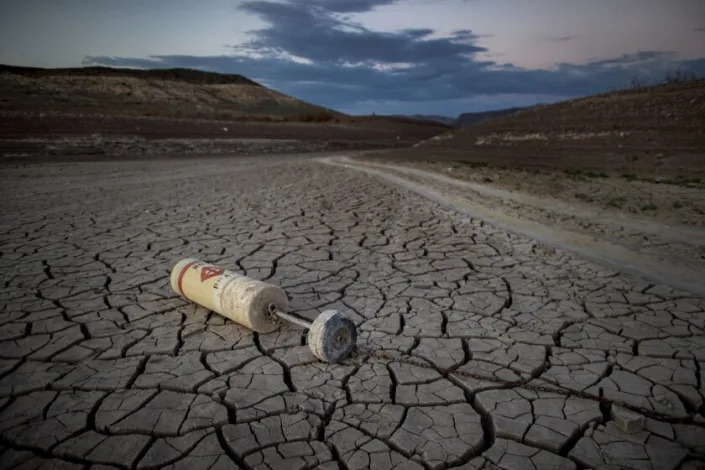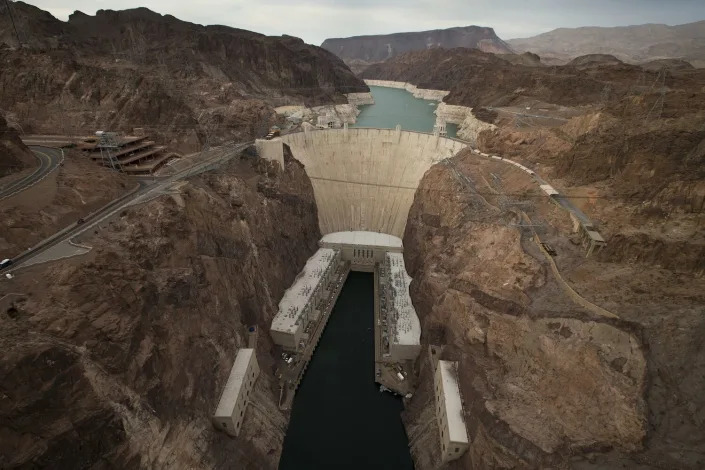 T.H.E.M.
¨We believe in the judgment; we believe this first judgment will take place as God revealed, in America...¨
T.H.E.M.
¨We believe in the judgment; we believe this first judgment will take place as God revealed, in America...¨
 T.H.E.M.
¨We believe in justice for all, whether in God or not; we believe as others, that we are due equal justice as human beings.¨
T.H.E.M.
¨We believe in justice for all, whether in God or not; we believe as others, that we are due equal justice as human beings.¨
Growing fears of ‘dead pool’ on Colorado River as drought threatens Hoover Dam water
–
Ian James

The Colorado River’s largest reservoirs stand nearly three-quarters empty, and federal officials now say there is a real danger the reservoirs could drop so low that water would no longer flow past Hoover Dam in two years.
That dire scenario — which would cut off water supplies to California, Arizona and Mexico — has taken center stage at the annual Colorado River conference in Las Vegas this week, where officials from seven states, water agencies, tribes and the federal government are negotiating over how to decrease usage on a scale never seen before.
Outlining their latest projections for Lake Powell and Lake Mead, the nation’s two largest reservoirs, federal water managers said there is a risk Lake Mead could reach “dead pool” levels in 2025. If that were to happen, water would no longer flow downstream from Hoover Dam.
“We are in a crisis. Both lakes could be two years away from either dead pool or so close to dead pool that the flow out of those dams is going to be a horribly small number. And it just keeps getting worse,” said Tom Buschatzke, director of the Arizona Department of Water Resources.
He said there is a real danger that if the coming year is extremely dry, “it might be too late to save the lakes.”

The Colorado River has long been severely overallocated, and its flows have shrunk dramatically during a 23-year megadrought supercharged by global warming.
Over the last six months, federal officials have pressed water managers in the seven states that rely on the river to come up with plans for major cutbacks. But negotiations have so far failed to produce an agreement, and the voluntary cuts states and water agencies have proposed remain far from the federal government’s goal of reducing water use by 2 million to 4 million acre-feet per year — a decrease of roughly 15% to 30%.
Faced with the prospect of federal authorities imposing mandatory, large-scale cutbacks, officials from states and water districts have been holding private, backroom talks in an effort to reach an agreement.Story continues
–
Click here for reuse options!Copyright 2022 Hiram's 1555 Blog
